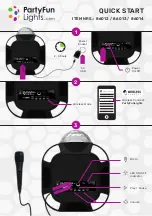
CEDAR Duo – declickle and auto dehiss
27
Auto Mode
There are six options:
■
BIAS
■
LF BIAS
■
ATTEN
■
L-R / M-S (shown above in L-R mode)
■
MENU
■
AUTO-OFF
Bias (dB)
The Bias control allows you to tune the automatic algorithm for different applications and tastes;
for example a broadcaster may want a very clean, dry result, but a for a CD remaster a more
transparent sound (but with a little more residual noise) may be more appropriate.
A positive bias ensures that the noise is completely removed, but runs the risk of slight signal
compression. A negative bias may retain more ambience in the signal, but at an increased risk
of noise pumping.
This control operates across the whole signal spectrum and once set, the process will
automatically apply a similar style of noise reduction to a wide variety of audio material.
The Bias control is a multiplying factor that affects the noise level calculated during the course
of the signal. It is not the same as the Level control in Manual mode, which sets an absolute
value for the noise content of the recording.
LF Bias (dB at 0Hz)
The LF Bias control allows fine control of the algorithm below 5kHz. It has no effect on higher
frequencies.
Use positive values for material that exhibits prominent low- and mid-frequency noise. Examples
of this may include 78rpm records and microgroove LPs. Use negative values when there is
relatively little low- and mid-frequency noise, and the noise content is predominantly hissy.
Attenuation (dB)
This is the maximum amount of noise attenuation applied at any given frequency at any given
moment. If the algorithm determines that the noise attenuation at any moment should be less
than the ATTEN that you select, the lesser figure will be applied.














































